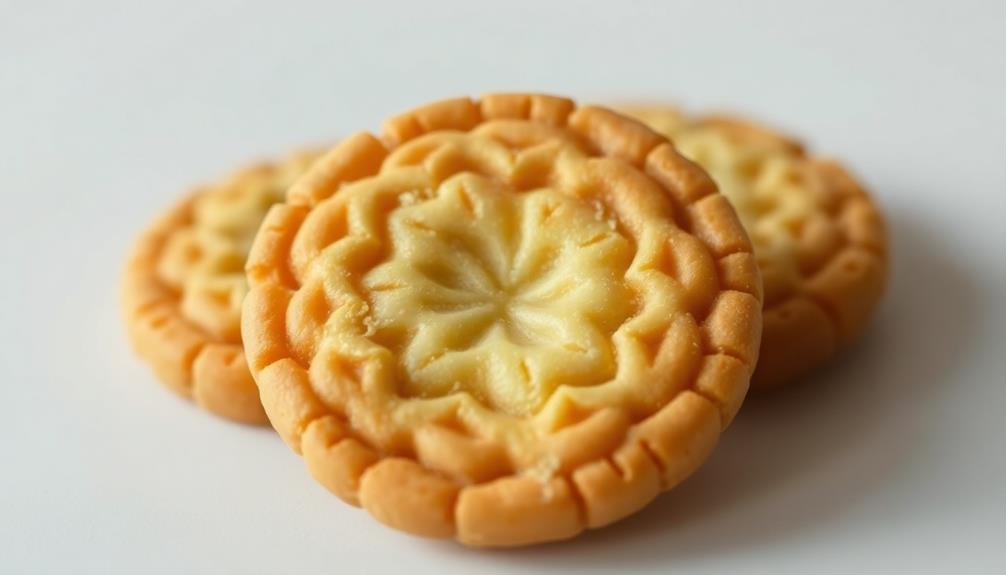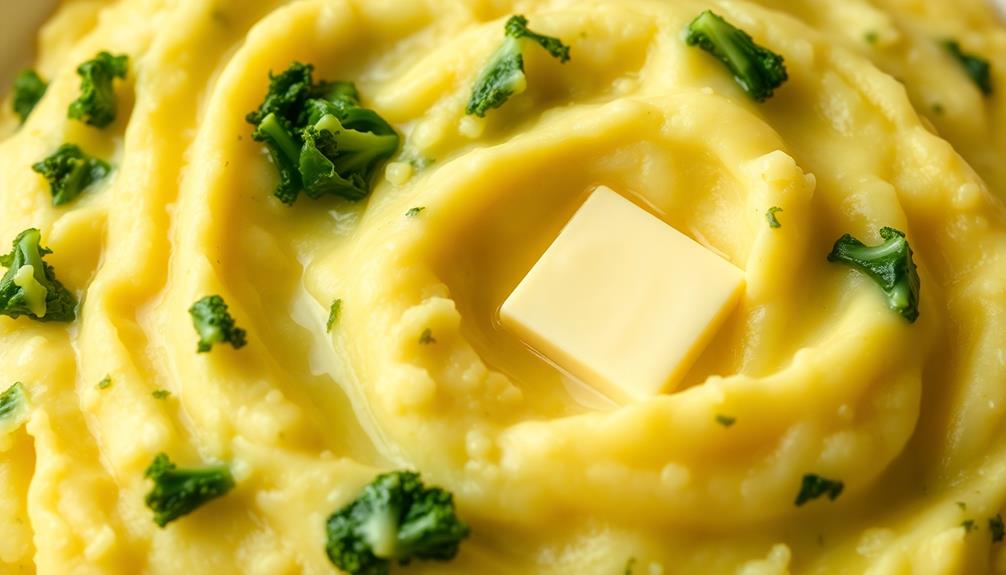Immerse yourself in the rich, comforting flavors of Indian Ghee Dal – a beloved lentil dish that's been a staple for centuries. Blending the warm, nutty aroma of ghee with the nourishing goodness of lentils and a harmonious mix of aromatic spices, this dish transcends cultural boundaries. You'll savor the perfect balance of creaminess, spice, and fragrance in every bite. Traditions and nostalgia come alive as you prepare this time-honored recipe, which has nourished generations and continues to delight palates across India. Intrigued? Let's dive deeper into the captivating history and preparation of this beloved lentil dish.
Key Takeaways
- Indian Ghee Dal is a classic lentil-based dish that combines aromatic spices, creamy ghee, and nutritious lentils for a satisfying and comforting meal.
- Ghee, a clarified butter, has been an essential ingredient in Indian cuisine since ancient times, known for its rich, nutty aroma.
- The dish is an integral part of Indian cuisine and traditions, often prepared during festive occasions and family gatherings.
- Lentils are versatile, excellent sources of protein, fiber, and essential vitamins, making the dish a nutritious choice.
- The combination of ghee-infused dal has evolved with regional variations across India, reflecting the vibrant culinary traditions of the Indian subcontinent.
History
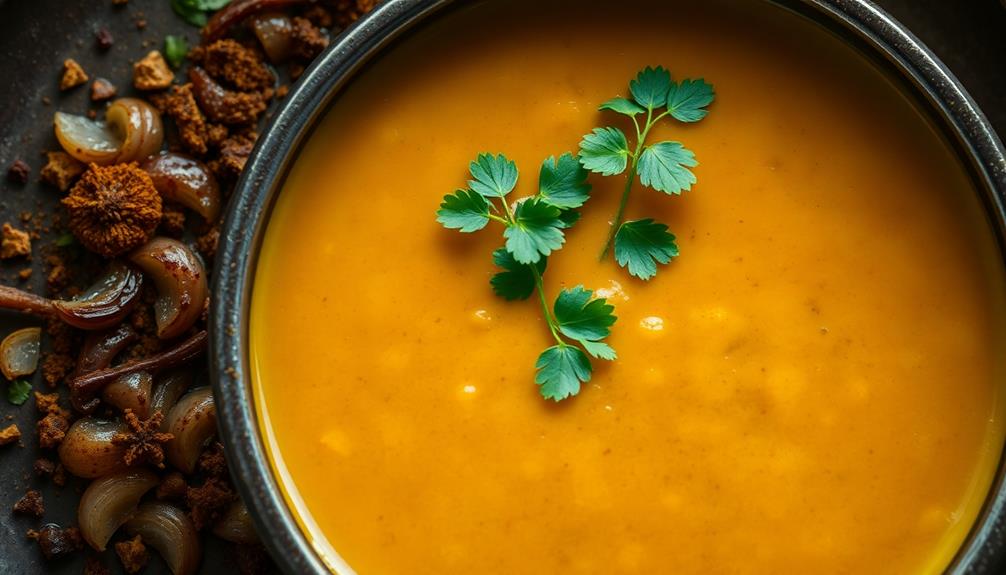
Since ancient times, ghee and dal have been staple ingredients in Indian cuisine. These humble yet flavorful foods have been nourishing the people of the subcontinent for generations.
Ghee, the clarified butter revered for its rich, nutty aroma, has been a kitchen essential dating back to Vedic times. Meanwhile, dal, the umbrella term for a variety of lentils, has been a dietary mainstay, providing plant-based protein, fiber, and essential nutrients.
The combination of ghee-infused dal is a time-honored recipe that has evolved over the centuries, with each region and household adding its own unique twist.
From the hearty, comforting dals of the north to the tangy, spice-laden versions of the south, this beloved dish has become a unifying force, transcending cultural boundaries and delighting palates across India.
The rich history of ghee dal reflects the enduring traditions and flavors that continue to shape the diverse culinary landscape of this extraordinary nation.
Recipe
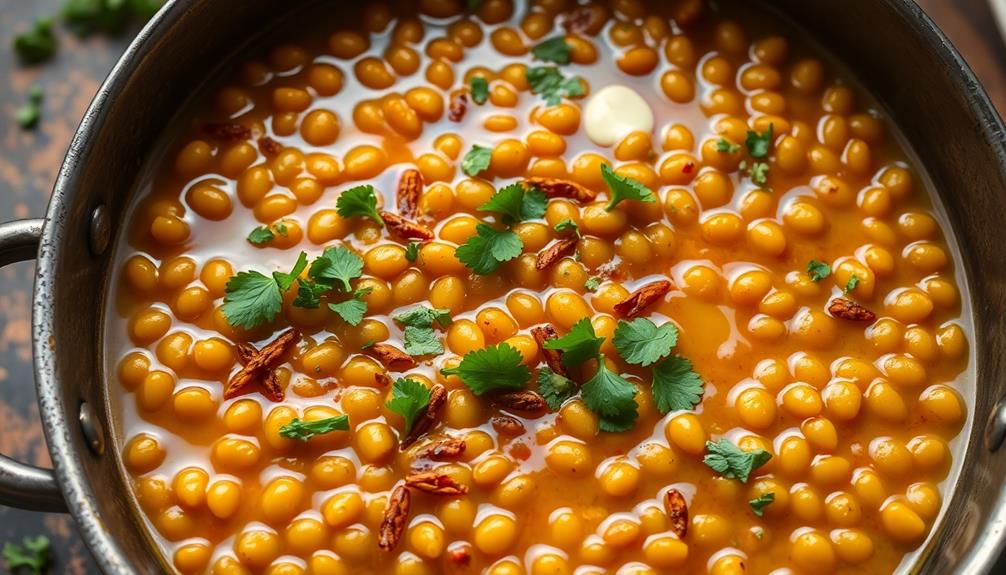
Indian Ghee Dal is a classic and comforting lentil-based dish that's a staple in many Indian households. The combination of aromatic spices, creamy ghee, and nutritious lentils creates a flavorful and satisfying meal.
Lentils are an excellent source of protein, fiber, and essential vitamins and minerals. They're a versatile ingredient that can be prepared in a variety of ways, making them a popular choice for vegetarian and vegan diets. In this recipe, the lentils are cooked with a blend of spices and then finished with a drizzle of fragrant ghee, which adds a rich and indulgent flavor.
Ingredients:
- 1 cup split yellow lentils (toor dal)
- 4 cups water
- 1 teaspoon cumin seeds
- 1 teaspoon mustard seeds
- 2 tablespoons ghee
- 1 onion, finely chopped
- 2 cloves garlic, minced
- 1 inch ginger, grated
- 1 teaspoon coriander powder
- 1 teaspoon cumin powder
- 1 teaspoon garam masala
- 1 teaspoon red chili powder
- Salt to taste
- Chopped cilantro for garnish
Cooking Instructions:
In a large pot, combine the lentils and water. Bring to a boil, then reduce the heat and simmer for 20-25 minutes, or until the lentils are soft and cooked through. Mash the lentils slightly with a potato masher or the back of a spoon.
In a separate pan, heat the ghee over medium heat. Add the cumin seeds and mustard seeds and let them sizzle for 30 seconds. Add the onion, garlic, and ginger, and sauté until the onion is translucent.
Stir in the coriander powder, cumin powder, garam masala, and red chili powder, and cook for 2-3 minutes. Add the cooked lentils to the spice mixture and stir to combine. Season with salt to taste. Garnish with chopped cilantro before serving.
To enhance the flavor and texture of the dish, it's recommended to use high-quality ghee, which can be found in Indian grocery stores or online. Additionally, you can adjust the spice level by adding more or less red chili powder to suit your personal preferences.
Cooking Steps

First, soak the lentils in water for half an hour.
Drain and rinse the lentils to remove any impurities.
Next, heat the ghee in a pan and add the aromatic spices to infuse the oil with their flavors.
Step 1. Soak Lentils for 30 Minutes
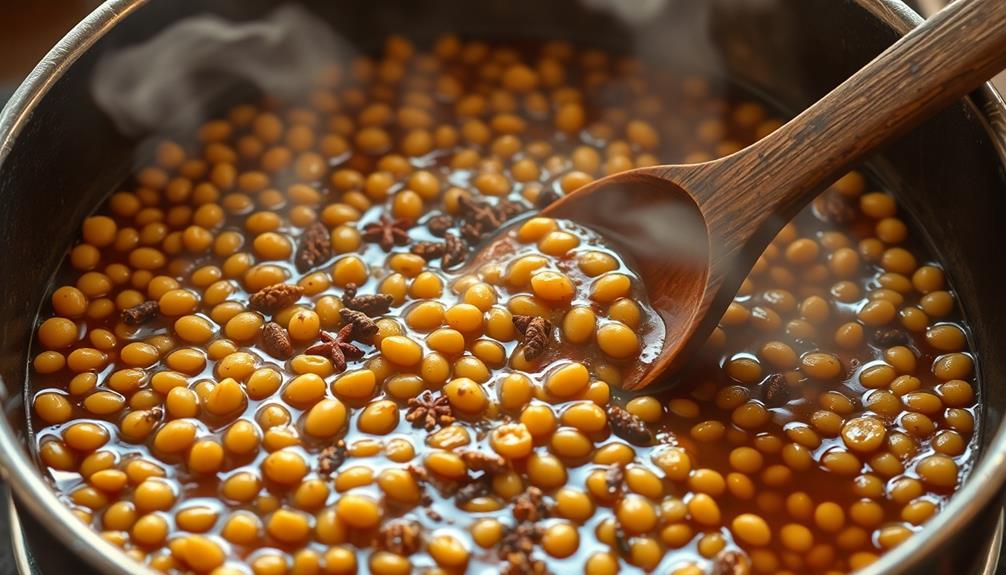
Before you can begin cooking the lentils, you'll want to soak them in water for 30 minutes. This simple step helps to soften the lentils and break down any tough outer skins, making them more tender and easier to digest.
Simply place the lentils in a large bowl and cover them with several inches of cool, filtered water. Allow them to soak undisturbed for half an hour, then drain and rinse them thoroughly.
This pre-soaking process ensures the lentils cook up beautifully—soft and creamy on the inside, yet retaining a slight bite. Once they've soaked, the lentils will be ready to move on to the next stage of the recipe.
Step 2. Drain and Rinse Lentils
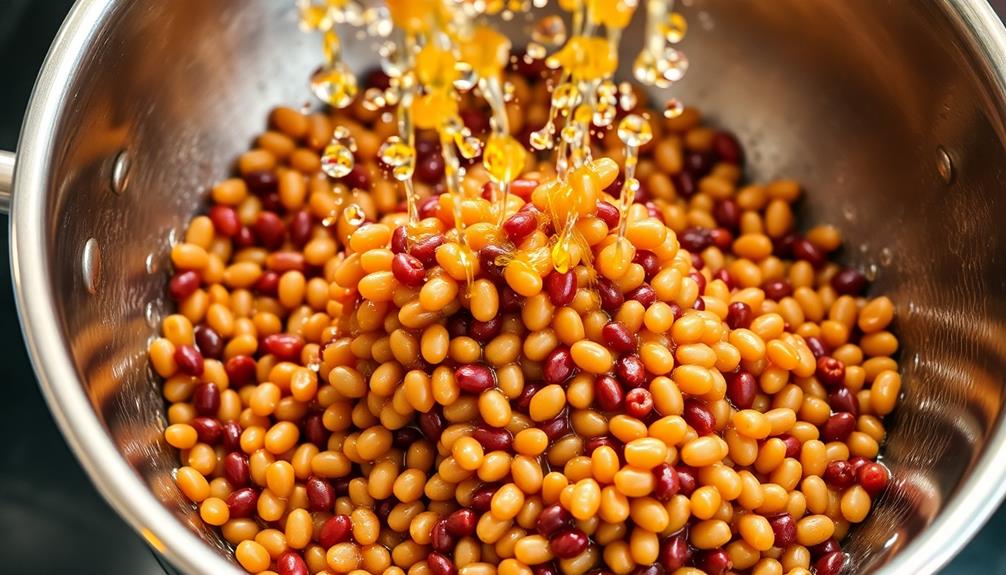
After letting the lentils soak for 30 minutes, it's time to drain and rinse them. This step is crucial to remove any excess starch and impurities, ensuring your dal turns out smooth and creamy.
Grab a fine-mesh strainer and gently pour the lentils into it, letting the water drain away. Rinse the lentils under cool, running water, gently stirring them with your hands to dislodge any remaining debris. You'll notice the water turning cloudy – that's the starch being washed away.
Keep rinsing until the water runs clear, then give the lentils a final shake to remove as much liquid as possible. Now they're ready for the next step in your flavorful ghee dal!
This quick, yet essential, task sets you up for success, allowing the lentils to cook evenly and absorb all the aromatic spices you'll be adding next. Get excited – your comforting, delicious Indian dish is coming together!
Step 3. Heat the Ghee
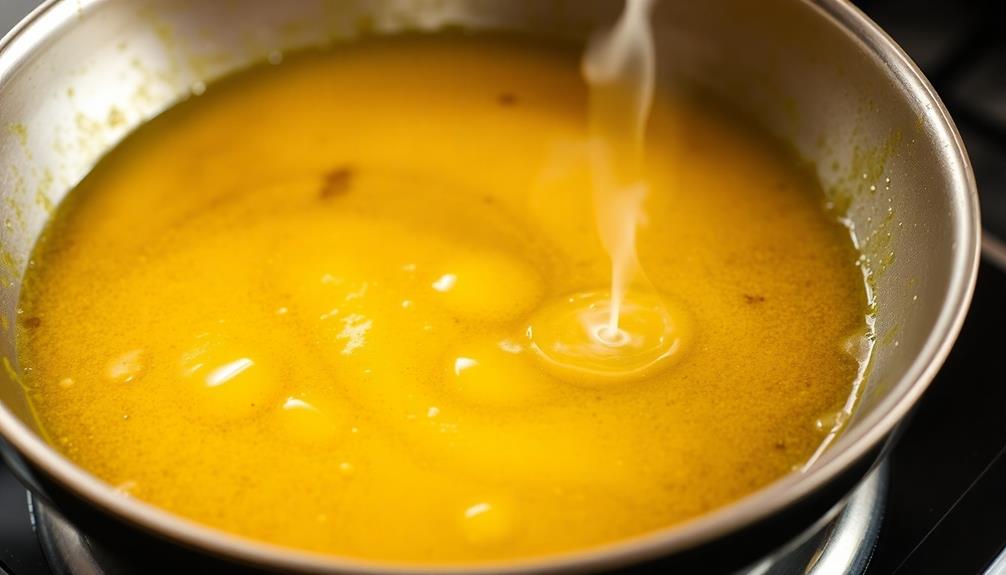
Heat a large pot or Dutch oven over medium flame and add the ghee. As the ghee sizzles, it'll release its rich, nutty aroma, filling your kitchen with the comforting scent of Indian cuisine.
Swirl the pot to coat the sides, then let the ghee heat up until it shimmers. This is the perfect time to add your whole spices – maybe some cumin seeds, mustard seeds, and a cinnamon stick or two.
Listen as they crackle and pop, infusing the ghee with their bold flavors.
Now, it's time to get hands-on! Carefully tilt the pot and use a spoon to baste the ghee over the spices, allowing them to toast and release their aromatic oils.
The sizzling sound and the sight of those spices dancing in the golden ghee will have your senses tingling in anticipation. This simple step lays the foundation for the incredible flavor that's about to unfold in your Indian Ghee Dal.
Step 4. Add the Spices
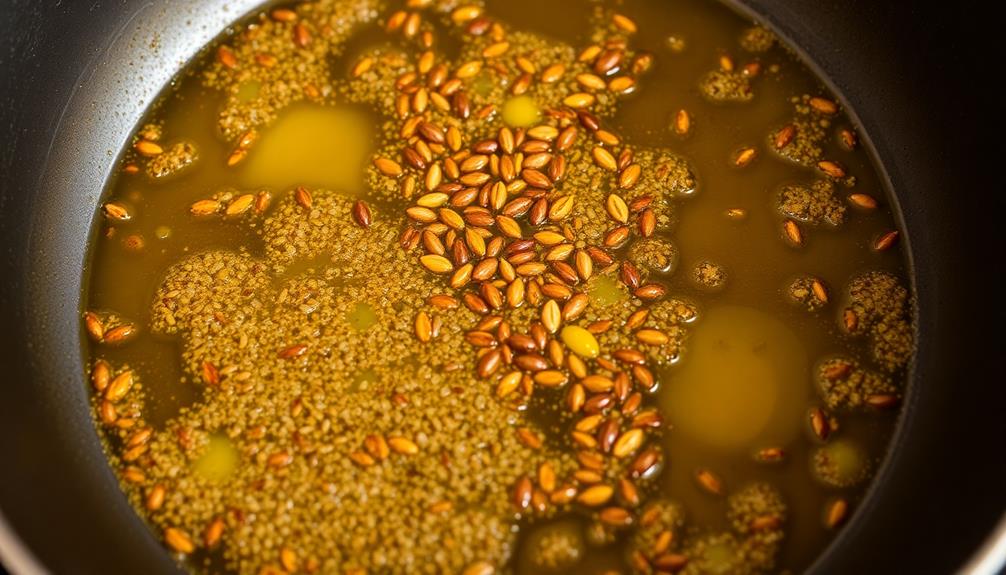
Once the ghee is hot and the spices have sizzled, it's time to add the remaining ingredients. First, toss in the cumin seeds and let them dance in the fragrant oil for a minute or two. Their earthy aroma will fill your kitchen, setting the stage for the flavors to come.
Next, add the coriander, turmeric, and cayenne. These vibrant spices will infuse the dal with a warm, golden color and a subtle heat that tingles the tongue.
Now, it's time to pour in the lentils. Watch as they soak up the spiced ghee, transforming into a comforting, nourishing base. Stir everything together, ensuring the lentils are evenly coated.
Step 5. Add Lentils and Simmer
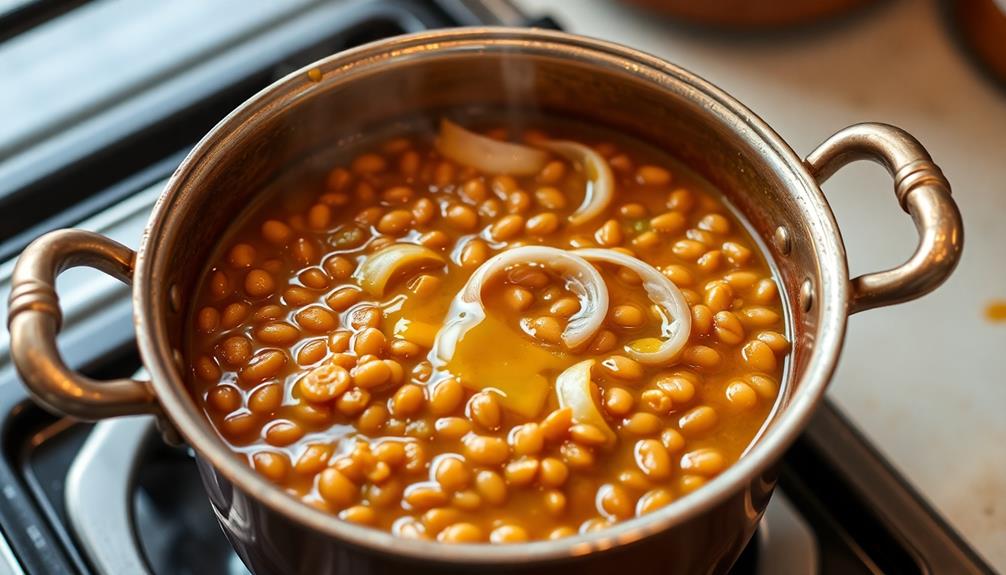
Next, toss in the lentils. You'll want to add the split yellow lentils, the backbone of this dish. Watch as they tumble into the fragrant spiced oil, sizzling and absorbing all those aromatic flavors. Stir them in gently, ensuring every lentil is coated.
Now, pour in the water and bring the mixture to a simmer. As it bubbles away, the lentils will soften and release their earthy, nourishing essence. Be sure to give it an occasional stir, allowing the flavors to meld together harmoniously.
Let the dal simmer for about 20 minutes, until the lentils are tender and the sauce has thickened to your desired consistency. Adjust the heat as needed to maintain a gentle, steady simmer.
Breathe in the comforting aroma that fills the air – it's a true delight for the senses. With the lentils now softened and the spices blended to perfection, your Indian Ghee Dal is well on its way to becoming a rich, satisfying meal.
Final Thoughts
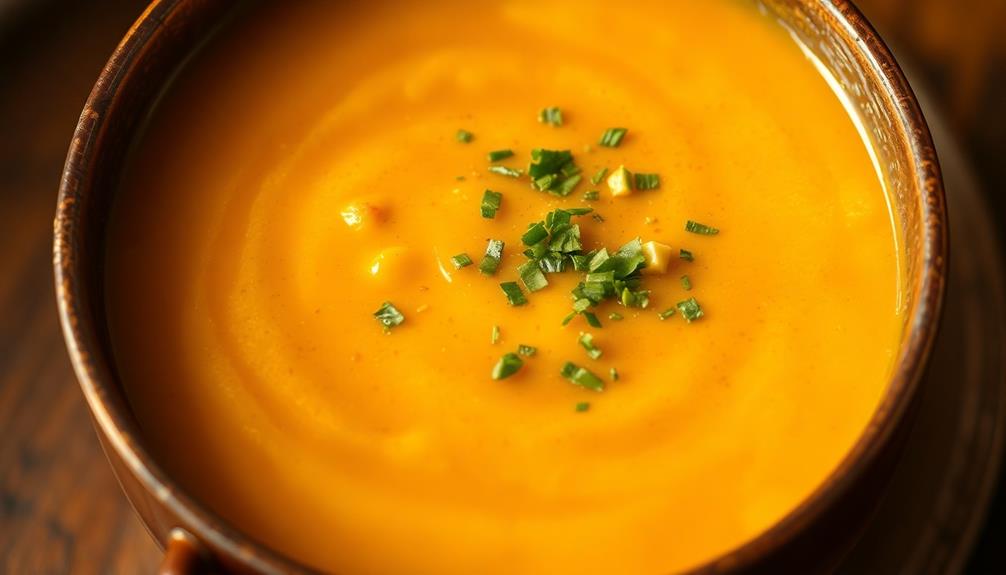
Savoring the aromatic blend of spices and the creamy richness of ghee, the Indian Ghee Dal stands as a comforting and nourishing dish, one that embodies the vibrant flavors of the subcontinent.
As you savor each bite, you'll be transported to the bustling markets of India, where the air is thick with the tantalizing aromas of cumin, coriander, and fragrant spices.
The simmered lentils, cooked to perfection, melt in your mouth, while the ghee lends a luxurious mouthfeel that's truly indulgent.
This dish is a testament to the art of Indian cuisine, where simplicity and depth of flavor come together to create a truly satisfying and unforgettable dining experience.
Whether you're enjoying it as a main course or as a comforting side, the Indian Ghee Dal is sure to leave you feeling satisfied and craving more of its delicious goodness.
Frequently Asked Questions
Can Ghee Dal Be Stored for Later Use?
You can store ghee dal for later use. Just let it cool completely, then transfer it to an airtight container and refrigerate. It'll stay fresh for up to 4-5 days when stored properly.
What Is the Best Way to Reheat Ghee Dal?
To reheat ghee dal, you can place it in a saucepan over medium heat. Stir occasionally until it's heated through. You can also microwave it in short bursts, stirring between intervals, until it's warm and ready to enjoy.
Can Ghee Dal Be Made in a Slow Cooker?
Yes, you can easily make ghee dal in a slow cooker. Just add all the ingredients, set the slow cooker to low, and let it simmer for 4-6 hours until the lentils are tender and the flavors have melded together.
How to Adjust the Spice Level in Ghee Dal?
To adjust the spice level in your ghee dal, start by adding less chili powder or cayenne pepper. You can always add more later if you want it spicier. Taste as you go and tweak the seasonings to suit your preferences.
Is Ghee Dal Suitable for a Vegetarian Diet?
Yes, ghee dal is suitable for a vegetarian diet. The dish is made with lentils, vegetables, and spices, without any meat or animal products. As long as you use vegetable ghee or oil, it can be a delicious and protein-rich vegetarian meal.



